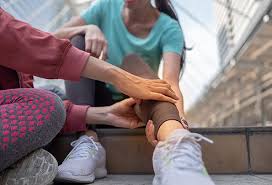2021-04-22
Ankle sprains are one of the most common joint injuries and almost everyone suffers at least a mild ankle sprain or sprain at some point in their life. When you have an ankle injury, your doctor usually recommends that you avoid sports and daily physical activity until the ankle heals. You may be able to treat a mild sprain at home.
Wrap the ankle with an elastic bandage, taking care not to tighten it too tightly
Use crutches to avoid stress on your ankles
Elevate your feet with pillows if necessary to reduce swelling
Take ibuprofen (like Advil) or acetaminophen (like Tylenol) for pain relief
Give your ankles plenty of rest, supplement nutrients, such as vitamin C, vitamin A, vitamin E, and selenium supplements
Ice compress injury site can also be a relief

For mild sprains, this can take a week to 10 days, while for more severe sprains it can take as long as several weeks to heal.
Housework that requires you to stand up in the weeks following a severe ankle sprain can be difficult. It may be helpful to arrange for someone to visit you to help you with any physical chores. In general, you should follow your doctor's instructions to continue treatment such as rest, freezing, compression, elevation, etc., until the symptoms resolve. 72 hours after injury, your physician may prescribe hyperthermia. Heat only after the sprain heals, which can take up to three months for a severe sprain.
The heat draws blood to the skin around the ankle and, if applied too early after a sprain, can increase swelling and internal bleeding. There are many heating treatments available. Doctors usually use heating pads, hot ointments, and whirlpool baths or bathtubs. Massage can also be used to relieve muscle pain and specific heating treatments are recommended as appropriate. Heating options include heating lamps, hot showers, and pain. However, massaging an injured ankle can disrupt the healing process and damage the injured ligaments immediately after the injury.

In general, after a severe sprain, you should try to provide additional support for the ankle for at least a year. Binding is a good precautionary measure if it is carried out immediately before participation in the sport and the wearer has been properly trained in the technique. The ankle is usually bound from the middle of the foot to the lower part of the calf. Physicians generally discourage the use of braces for people who have not suffered ankle injuries. But for those with repeated injuries and those in the early stages of injury, orthotics may help improve recovery and prevent further injury. The neoprene sleeve simply provides pressure, while other ankle compression sleeve for sprain provide more support through metal or plastic strips on either side of the ankle.
Request a Quote
Request a Quote